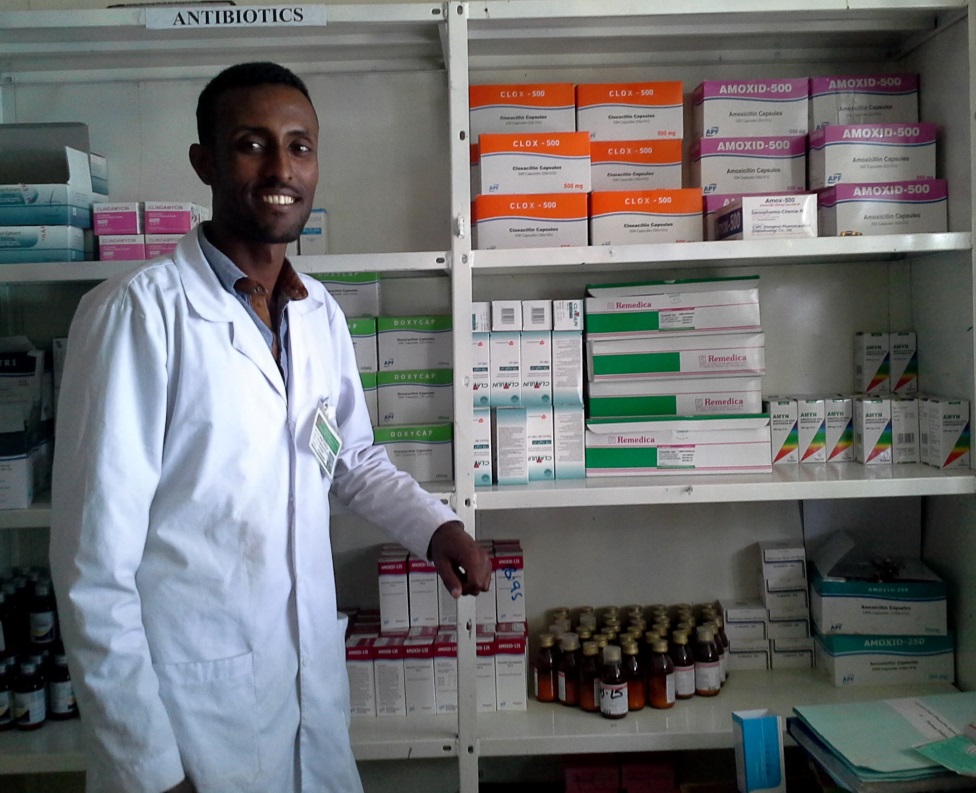By Francis Aboagye–Nyame, SIAPS Program Director

On this day in 2014, the global health community made a commitment to universal health coverage (UHC) throughout the world. Although progress has been made, more than one billion people still lack access to basic health care. Further, as a Lancet Commission report, Essential Medicines for Universal Health Coverage, said in November, most low-income countries lack structural access to even basic essential medicines.
Bridging this gap requires system-wide interventions, such as strengthening the role of government, better medicines regulation, promoting quality use, and more transparency and accountability. These activities can reap big benefits. With a sound pharmaceutical system, “for US$1–2 per month every person in low-income and middle-income countries can have access to a basket of about 200 essential medicines,” according to the report.
As the global community works to expand coverage of high-quality services, we must keep in mind that strengthening pharmaceutical systems is a crucial step. Many of these interventions have been part of the SIAPS Program for the past five years as we work to help ensure a key part of UHC: access to safe, quality medicines. Here’s what we have been doing and a sample of our results.
Increasing governance and leadership capacity
Ensuring access starts with strong leadership, which happens when governments realize that medicines are a critical ingredient in quality health services. Progress involves engaging representatives at every level, from national medicines regulatory agencies to local pharmacies. It includes helping these groups update pharmaceutical laws and policies to support UHC and training staff to shore up necessary human resources. One example: Building on the work of a predecessor project that MSH also implemented, the Strengthening Pharmaceutical Systems Program, SIAPS supported the Government of the Republic of Namibia in long-term planning for pharmaceutical human resources and in building the capacity of two local institutions to provide pre-service and in-service pharmaceutical management training.
Improving efficiency
As countries work to expand health care services under UHC, they also need pharmaceutical and logistics management information systems that provide relevant, quality, and timely data for decision making, another key element mentioned in a The Lancet Commission report paper. In South Africa, Lesotho, and Swaziland, SIAPS supports the uptake and use of RxSolution, an automated information system with inventory, warehouse, and information management features. In South Africa, it is being used in 280 facilities nationwide. Use of RxSolution continues to significantly improve data availability, quality, and transmission to decision makers, which improves inventory management and medicines availability.

Promoting rational use
It is also critical to ensure that medicines are used correctly, which is another benefit of improved pharmaceutical management. For example, in Jordan, a 2010 study indicated that local practices at participating hospitals did not follow best practices when dosing antibiotics for surgical prophylaxis. With technical assistance from SIAPS, teams at three Ministry of Health hospitals piloted customized protocols and procedures, leading to a substantial improvement in use of the correct antibiotic at the right time and a decrease in both the number of doses of given and the prescribing of other, unnecessary antibiotics. The program also achieved substantial cost reductions.
Ensuring patient safety
Strong surveillance systems help protect patients after licensing and approval of medicines occurs. Pharmacovigilance aims to detect, assess, understand, and prevent adverse effects related to medicines and health technologies. In Bangladesh in 2012, the Directorate General of Drug Administration and SIAPS partnered to revive the national pharmacovigilance program and establish an Adverse Drug Reaction Monitoring cell that collects adverse event reports from health care facilities, hospitals, and pharmaceutical companies; maintains and analyzes adverse event databases; and shares adverse event information with WHO’s International Drug Monitoring Center. As a result, reporting on the number of adverse drug events increased four-fold.
Supporting quality
Strong regulatory systems support the delivery of high-quality health products. In 2012, the first list of registered medicines in DRC was published with SIAPS support. Customs officers use it to check for unregistered medicines at border posts, and provincial pharmacists use it to track and confiscate unregistered products during inspections of pharmaceutical premises. The number of registered medicines in the country increased from 200 in 2010 to more than 3,000 in 2014, and 72% of the medicines included on DRC’s essential medicines list currently have at least one product registered, up from 44% in 2011. In addition, the Ministry of Health can now evaluate and approve medicines more efficiently.
These are just a few of the many components of a sound pharmaceutical system, which contributes to UHC by ensuring comprehensive, affordable, equitable access and appropriate use of medicines and health technologies.
This blog includes content and research from Kwesi Eghan, SIAPS Portfolio Manager, and Megan Rauscher, Senior Project Officer, Management Sciences for Health, in their forthcoming report, Pharmaceutical Management Considerations for Universal Health Coverage.

